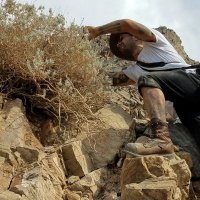
Joey Santore
@joeysantore
Producer of Crime Pays But Botany Doesn't. Botany, Taxonomy, Evolution, Toilet Humor. 6 out of 10 PhD candidates can't stand me. Kill the Lawn Within Yourself.
ID: 1162941496120754178
https://www.bonfire.com/store/crime-pays-but-botany-doesnt/ 18-08-2019 04:17:38
2,2K Tweet
14,14K Followers
86 Following



























